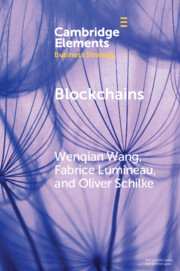Element contents
Blockchains
Published online by Cambridge University Press: 09 September 2022
Summary
- Type
- Element
- Information
- Series: Elements in Business StrategyOnline ISBN: 9781009057707Publisher: Cambridge University PressPrint publication: 06 October 2022
References
- 22
- Cited by



